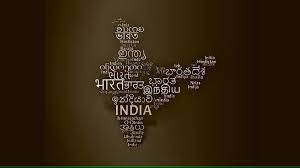Today’s Current Affairs: 19th Feb 2024 for UPSC IAS exams, State PSC exams, SSC CGL, State SSC, RRB, Railways, Banking Exam & IBPS, etc
Table of Contents
Single Species Action Plan : CMS COP14

The 14th Conference of the Parties to the Convention on the Conservation of Migratory Species of Wild Animals (CMS COP14) adopted the Single Species Action Plan for the conservation of the Hawksbill Turtle.
- International Single Species Action Plan is the key instrument developed under the Agreement on the Conservation of African-Eurasian Migratory Waterbirds (AEWA).
- It is for the purpose of implementing coordinated measures to restore migratory waterbird species to a favourable conservation status.
- International cooperation among the species’ range states is essential for the implementation of these action plans.
- Agreement on the Conservation of African-Eurasian Migratory Waterbirds (AEWA) is an intergovernmental treaty dedicated to the conservation of migratory waterbirds and their habitats across Africa, Europe, the Middle East, Central Asia, Greenland and the Canadian Archipelago.
- It is developed under the framework of the Convention on Migratory Species (CMS) and administered by the United Nations Environment Programme (UNEP).
- It brings together countries and the wider international conservation community in an effort to establish coordinated conservation and management of migratory waterbirds throughout their entire migratory range.
- It covers 255 species of migratory waterbirds that are ecologically dependent on wetlands for at least part of their annual cycle.
- The Agreement area stretches from the northern reaches of Canada and the Russian Federation to the southernmost tip of Africa, covering 119 Range States from Africa, Europe, the Middle East and parts of Asia and Canada
Anti-Satellite Weapon:

Russia is actively working towards a formidable new development in space technology, focusing on creating a nuclear anti-satellite (ASAT) weapon.
- Anti-Satellite Weapon is designed to debilitate or destroy satellites that are already in orbit and operational.
- Types of Anti-Satellite Weapons: ASATs are broadly classified into two types namely
- Kinetic energy methods: This involves launching a missile that intercepts and physically collides with the target satellite to destroy it. The kinetic energy ASATs physically collide with satellites and can reach altitudes. These ASATs can be ballistic missiles, drones, and other satellites.
- Non-kinetic methods: They use non-physical attacks such as cyber-attacks, jamming, and even lasers to blind satellites without physically destroying them.
- All of these attacks can be launched from the air, low orbit, or even ground installations.
- These can even undertake pellet cloud attacks on the enemy’s low-orbit satellites.
- Other ASAT capabilities include cyber-attacks on space systems, Electro-Magnetic Pulse (EMP) explosion devices, directed energy (laser-based) weapons and targeted missiles for the destruction of satellites to sabotage the enemy’s military operations.
- There are many countries which have this capability, but only four countries including India have demonstrated their ASAT capabilities.
Bharatiya Bhasha Samiti:

The Chairman of Bharatiya Bhasha Samiti advocated for the promotion of Indian languages in education and stated that textbooks will soon be available in Indian languages on digital platforms.
- Bharatiya Bhasha Samiti is a High-Powered Committee for the Promotion of Indian Languages.
- It has been constituted by the Ministry of Education, Government of India in 2021.
- The mandate of this committee would be to explore and recommend pathways for the holistic and multidisciplinary growth of Indian languages as envisaged in the National Education Policy 2020.
- It has also been entrusted to advise the Ministry on all matters pertaining to the revitalization of existing language teaching and research and its extension in various institutions in the country.
- To perform the tasks assigned to it, the High-Powered Committee may appoint sub-committees/study groups.
- The committee may organise seminars, workshops, conferences, and webinars to highlight the need for the promotion of Indian languages.
- It may also interact and coordinate with any institution of the Central/State Government dealing with teaching, research, and extension/promotion of languages.
- Shri Lal Bahadur Shastri National Sanskrit University (SLBSNSU), New Delhi would provide secretarial assistance and space to house the High-Powered Committee and meet the related expenditure as per the Government of India rules, regulations and instructions from time to time.
Pradhan Mantri Formalisation Of Micro Food Processing Enterprises Scheme:

A one-day awareness programme on the Pradhan Mantri Formalisation of Micro Food Processing Enterprises (PMFME) scheme was recently held in Srinagar.
- Pradhan Mantri Formalisation of Micro Food Processing Enterprises (PMFME) Scheme launched on June 29, 2020, PMFMPE is a Centrally Sponsored Scheme by the Ministry of Food Processing Industries.
- It is designed to address the challenges faced by micro-enterprises and to tap the potential of groups and cooperatives to support the upgradation and formalisation of these enterprises.
- Objectives is to build the capability of microenterprises to enable:
- Increased access to credit by existing micro food processing entrepreneurs, FPOs, self-help groups, and co-operatives.
- Integration with an organised supply chain by strengthening branding & marketing.
- Support for the transition of existing 2,00,000 enterprises into a formal framework.
- Increased access to common services like common processing facilities, laboratories, storage, packaging, marketing, and incubation services.
- Strengthening of institutions, research, and training in the food processing sector; and
- Increased access for enterprises, to professional and technical support.
- Under the scheme, 2,00,000 micro food processing units will be directly assisted with credit-linked subsidies.
- Adequate, supportive common infrastructure and institutional architecture will be supported to accelerate the growth of the sector.
Magnetoelectric Multiferroics:

Researchers have identified a unique mechanism of electric polarisation via magnetic ordering in a novel mineral named “MnBi2S4”, which can be useful for energy-efficient data storage.
- Magnetoelectric multiferroics are a special class of materials popular among the research fraternity for their rarity and unique properties.
- These materials can exhibit both magnetism and ferroelectricity simultaneously.
- For advanced technology applications like spintronics, electronic memory devices, and other electronic components like actuators and switches.
- MnBi2S4 is also known as mineral graţianite and belongs to the ternary manganese chalcogenide family.
- It has distinct magnetic structures in the material, including a spin density wave, as well as cycloidal and helical spin structures.
- Importantly, they found that the last two spin structures induced ferroelectricity in the material.
- It is also known to be centrosymmetric and undergoes magnetic ordering at low temperatures (27, 23, and 21.5 Kelvins).
Munich Security Conference:

World leaders gather for the sixtieth Munich Security Conference with growing concerns about a continued war in Ukraine and threats to North Atlantic Treaty Organization (NATO) cohesion.
- Munich Security Conference (MSC) is the world’s leading forum for debating international security policy.
- Objective is to build trust and contribute to the peaceful resolution of conflicts by sustaining a continuous, curated, and informal dialogue within the international security community.
- It has been held in Munich, Bavaria, Germany, since 1963.
- The conference is held annually in February.
- It brings together security experts, politicians, military leaders, and the defence industry from around the world.
- MSC regularly convenes high-profile events on particular topics and regions and publishes the Munich Security Report, an annual digest of relevant figures, maps, and research on crucial security challenges.
World Governments Summit 2024:

The Prime Minister participated as the Guest of Honour at the World Governments Summit 2024.
- He delivered a keynote address on the theme “Shaping the Future Governments,” emphasizing the need for governance to be inclusive, tech-savvy, clean, transparent, and green.
- The World Governments Summit is an annual event held in Dubai, UAE, bringing together global leaders in government to discuss governmental processes, policies, and future-oriented topics like futurism and technological innovation
- It serves as a platform for knowledge exchange among government officials, thought leaders, policymakers, and private sector leaders, analysing future trends, issues, and opportunities facing humanity.
Species Threat Abatement And Restoration (STAR) Metric:

The International Union for Conservation of Nature (IUCN) has introduced the Species Threat Abatement and Restoration (STAR) metric to quantify actions aimed at halting biodiversity loss in oceans.
- The STAR metric uses data from the IUCN Red List to quantify extinction risks and threats faced by species.
- It assesses how specific actions in certain locations can contribute to international conservation targets, focusing on threat abatement and habitat restoration.
- STAR helps measure progress towards global biodiversity targets and supports decision-making by governments, businesses, and organizations in conservation efforts.
- It was first unveiled in 2021 for use in terrestrial areas and has now been extended for marine ecosystems as well.
- It emphasizes reducing unsustainable fishing, managing invasive species, and addressing climate change.
- This metric aligns with international agreements such as the Kunming-Montreal Global Biodiversity Framework and the Sustainable Development Goals.
GSLV-F14/INSAT-3DS Mission:

The Indian Space and Research Organisation (ISRO) is all set to launch its GSLV-F14/INSAT-3DS mission on 17th February 2024, with the aim of enhancing weather forecasting and disaster warning capabilities.
- INSAT-3DS will be launched aboard the Geosynchronous Satellite Launch Vehicle F14 (GSLV F14).
- GSLV-F14 is a three-stage launch vehicle.
- The first stage (GS1) has a solid propellant motor and four earth-storable propellant stages(EPS).
- EPS includes a supporting structure, propellant tanks, and an engine.
- The second stage (GS2) is also an earth-storable propellant stage
- The third stage (GS3) is a cryogenic stage, with propellant loading of liquid oxygen (LOX) and liquid hydrogen (LH2).
- The GSLV-F14 is the 16th flight of the GSLV, and the 10th flight with the indigenous cryo stage.
- INSAT-3DS comprises four payloads, including an Imager, a sounder, a data relay transponder, and a satellite-aided search and rescue transponder.




